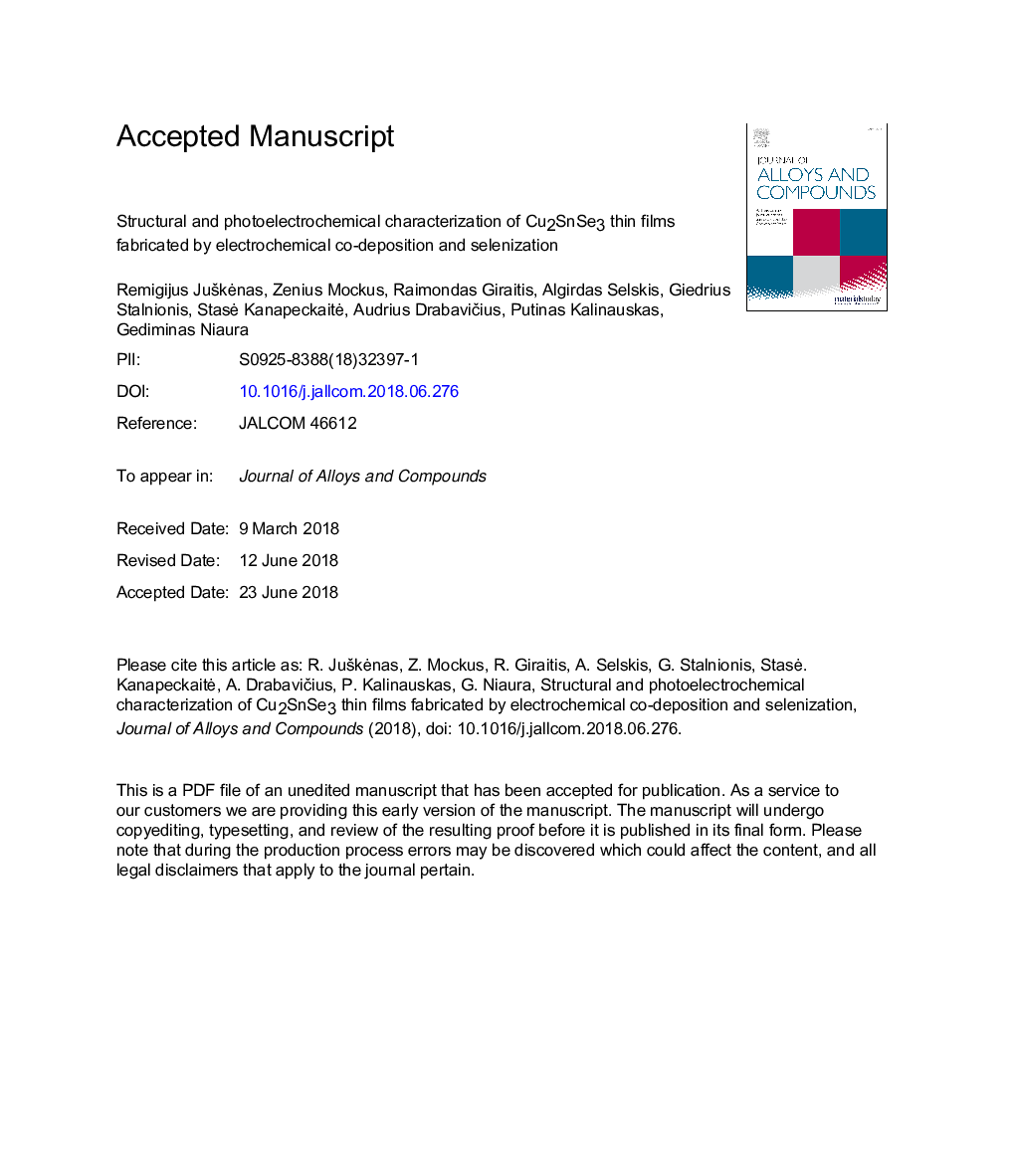| Article ID | Journal | Published Year | Pages | File Type |
|---|---|---|---|---|
| 7990257 | Journal of Alloys and Compounds | 2018 | 38 Pages |
Abstract
The Cu-Sn alloy as a precursor for Cu2SnSe3 (CTSe) thin films was electrochemically co-deposited from a modified electrolyte solution using magnetic steering. The Cu-Sn film on the Mo/glass substrate was continuous, smooth and contained no organic contaminants according to Raman spectroscopy. The current efficiency of Cu-Sn electrodeposition in the solution was about 90%, i.e. significantly higher than that previously reported. The Cu-Sn films with the Cu/Sn ratio in the range of 1.6-2.3 were selenized at temperatures of 350, 400, 450, 500 and 560â¯Â°C. The synthesized CTSe films were characterised by XRD, SEM, EDX and Raman spectroscopy. The photo-activity of the films was assessed by photoelectrochemical measurements in a 0.2â¯M Eu(NO3)3 aqueous solution. The conducted investigations revealed that the Cu2SnSe3 film with Cu/Snâ¯=â¯1.9 selenized at a temperature of 500â¯Â°C demonstrated the best photoelectrochemical response and presented p type doping. The photo-activity of the film increased after additional annealing in air at a temperature of 200â¯Â°C. Raman spectroscopy studies of Cu2SnSe3 thin films revealed a rather insignificant difference between the spectra of cubic and monoclinic polymorphs, however, one of the bands in the low energy region could be treated as a marker of the monoclinic phase. The Raman spectra evidenced that nearly all of the studied Cu2SnSe3 films contained SnSe2 the presence of which is detrimental for the photovoltaic characteristics of both Cu2SnSe3 and Cu2ZnSnSe4.
Related Topics
Physical Sciences and Engineering
Materials Science
Metals and Alloys
Authors
Remigijus JuÅ¡kÄnas, Zenius Mockus, Raimondas Giraitis, Algirdas Selskis, Giedrius Stalnionis, StasÄ KanapeckaitÄ, Audrius DrabaviÄius, Putinas Kalinauskas, Gediminas Niaura,
